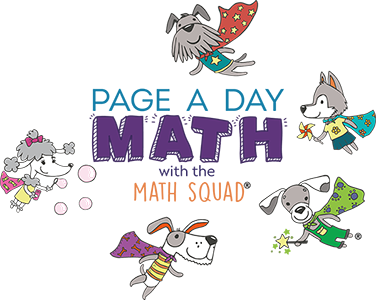
Why your child should develop great math habits rather than goals.
A habit is something you do enough times so it can be repeated automatically.
Goals are about outcomes.
We tend to think we need to change the result but really it’s the habits behind the results that needs to change.
Here’s an example I think you’ll relate to.
Not having a clean bedroom is a result of the lagging measure of your habits.
You may have your child spend an hour cleaning their room after it’s a huge mess. But what you really want is for them to think about putting things away as soon as they are finished using them. You want them to keep up, little by little (incrementally), and not after it’s become an overwhelming project.
I know…good luck with that, but maybe you just start with baby steps and maybe you even start by developing healthy math habits, first.
A goal you set is something that you can probably achieve if you have good habits as a baseline.
Goals can be tricky. What happens if you don’t reach your goal? Do you feel defeated? Was your goal realistic? Was the timeframe realistic? Did you have the prerequisites to attain your goal? Did you enjoy the process?
Habits play a role that help you develop solutions to everyday issues so you can focus your attention and energy on other things.
For math, the more space you free up by knowing basic math facts, fluently (the ability to recall and use basic math facts in your head comfortably and quickly without stressing), the more you can focus on more complicated parts of a math problem that need your attention.
This is exactly what Page A Day Math does for math practice to build fluency.
Page A Day Math helps your child develop excellent math habits, rather than goals. It helps you give your child a little practice each day that’s effective, meaningful, and never overwhelming, so your child develops a habit of completing math practice often and enjoys the process.
Help your child develop positive lasting math practice habits. It will aid them for the rest of their life.
You never know, it may lead to a clean bedroom too!
Curriculum Alignment
Page A Day Math Kits are aligned with and support Pre-K - 4th grade math curriculums including Pearson, McGraw-Hill, Saxon, and Abeka and support concepts learned in the Standards for Mathematical Practice which were created to ensure that all students graduate with the math skills needed to succeed in their careers and higher education.
About the Author and Creator of Page A Day Math
 Janice Marks
Janice Marks
Janice began her career in education to pursue teaching pre-algebra at BASIS Tucson North, a charter school currently ranked as the sixth-best STEM school in the country by Newsweek. There she found joy in teaching math, working with parents, and inspiring children to believe in themselves and thrive. This experience, along with helping her own children succeed in math, led her to develop the Page A Day Math system.
To try a sample book from one of our math kits, click here.





